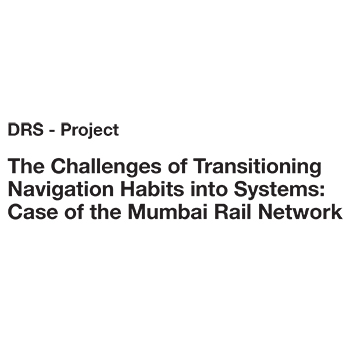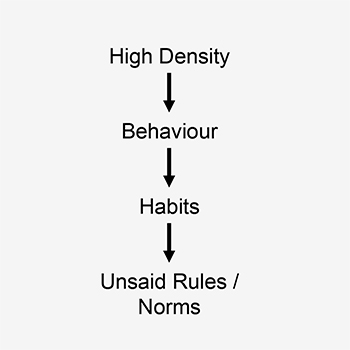Crowded platforms, long queues, noisy compartments, busy bridges, and a never-ending spirit are the most common visuals at any station in Mumbai and its local trains. EMUs, or electrical multiple units, which are otherwise known as the lifeline of Mumbai—Mumbai Local, carry about 7 million people daily.
The density makes these bridges, ticket counters, platforms, train compartments, etc. unique threshold spaces. The density forces the population to behave in a certain manner; over a course of time, these behaviours transform into habits and then into unsaid rules or norms after being accepted by the masses.
The process by which new behaviours become automatic is called habit formation. Old habits are hard to break and new habits are hard to form because the behavioural patterns we repeat are imprinted in our neural pathways, but it is possible to form new habits through repetition (habits, wikipedia).
One of the countries that faces a similar problem with density in local transport is Japan. The Tokyo Metro transports 8.7 million people daily. They manage the punctuality by assigning official pushers, who push the passengers to squeeze in so that the doors of the train can be shut. The other city with high public transport use is London. One rule that has been developed over time is that when you use the escalators to enter or exit the station, the right lane is the ‘fast lane'. You cannot stand in the lane if you are not willing to climb along with the movement of the escalators.
People usually want an easy way out of anything. If the bridges are too crowded, why not jump the tracks (as seen in India)? Infrastructure planning plays a crucial role in determining these habits. The moment you allow people to jump onto tracks and move to another platform, you give them the leeway to perform such tasks. On seeing this habit, the railway authorities erected fences between the tracks,dissuading commuters from jumping tracks. This did work for a while, but then people started to jump over them through the train gates on the other side of the platform.






